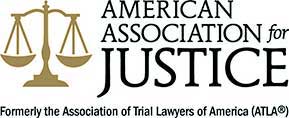What Is A Class Action Lawsuit
October 6, 2015
Class-action lawsuits are lawsuits that take place when a group of people want to sue a defendant. For instance, if seven different people were injured by a drug that was incorrectly mixed, they could pursue a class-action lawsuit against the company.
The lawsuit heads to court, and at that point, anyone who may have been affected by the injuries and the case itself may be contacted. Then, those people are asked if they want to opt into the case or out of it.
How will your compensation be delivered to you? A plan of distribution is normally devised. This plan shows how the money won will be distributed among those in the case. How much money the attorney will receive and how much litigation costs will also be included, so everyone privy to the information can see a dollar amount for their award. It’s possible that you will receive an equally distributed amount, but it’s also possible that your attorney can fight for your individual case to receive compensation in the amount you personally deserve.
How Do You Benefit From a Class Action Lawsuit?
Why combine all the actions into a single class action lawsuit when each plaintiff might pursue their own action? The explanation is that combining the different proceedings into a single case is frequently more practical for the plaintiff, the court, and the defendants.
For the plaintiffs, class action lawsuits are advantageous. One set of experts, records, witnesses, and issues apply to all class action lawsuits. One legal company handling one case instead of one or more law firms attempting to handle many cases is less expensive and more efficient due to this.
Most times, the amount of damages in many individual cases is insufficient to warrant the time and expenditure required to bring the suits separately.
If the plaintiff, which would be you in a personal injury case, wins, then the defendant will be made liable for the injuries you’ve suffered. At that point, everyone who was affected will divide the recovery compensation provided to care for the injuries.
A single recovery also ensures that the damages are fairly distributed among all the victims. If there are numerous lawsuits, the first few plaintiffs who succeed may receive all insurance funds or all of the defendant’s assets, leaving little to no money for the subsequent claimants to recover.
Since one lawsuit is less expensive for the courts than multiple lawsuits, class actions are advantageous for the courts as well. Just one judge and one courtroom are involved in one litigation. A single class-action lawsuit also ensures that the court calendar won’t be clogged with numerous cases.
The fact that class actions level the playing field is another benefit for plaintiffs. Defendant corporations are better able to financially fight just one claim, but when a law firm like Hoyt & Hoyt files a class action on behalf of numerous claimants, the case turns out to be a fair one. A corporation that faces many legal challenges is not only more likely to settle the class action lawsuit, but will likely modify its conduct as well and make favourable corrections in future practices.
What Are the Stages of Class Action Lawsuits?
Choose a reputable law firm. Make sure you choose a successful class-action law firm with the resources to fight for the interests of thousands or possibly millions of claimants if you have suffered an injury or damages that others may have also experienced. It takes skill to certify a class, ensure that the victim is permitted to serve as the lead plaintiff, try cases, and negotiate matters. A class-action law firm should have a proven track record of litigating the underlying legal issue in court.
Take legal action. A class-action lawsuit is typically initiated by the filing of a complaint that identifies at least one class representative, who then brings the action on behalf of the whole proposed class.
A right to respond to the action will be granted to the defendant(s). Defendants may use the argument that the conditions for a class action have not been satisfied or that it would be preferable to treat the claims individually.
Get class-certified. The class representative will submit a motion for the court to certify or approve the proposed class after the complaint is filed. The class representative and the legal firm or firms that represent the class representative must:
Demonstrate that the defendant is the target of the valid legal claim(s). Identify the lead plaintiff. When the class is certified, the plaintiff who initially filed the complaint, who is typically the class representative, must receive formal approval to serve as the lead plaintiff. A class action lawyer will be hired by the lead plaintiff, who will help to file the complaint, notify all parties involved, and negotiate any settlement. The lead plaintiff must be a representative member of the class, free from animosity toward other class members, and qualified to speak on behalf of the group.
Show that the class size is adequate. This indicates that the main plaintiff has a sufficient number of similarly harmed co-plaintiffs. If each class member sustains a separate injury, the class may be deemed invalid.
Prove notice to the class member. Most of the time, once a lawsuit is designated as a class action, notice must be distributed to all parties who might be regarded as class members. This is sent via the internet or direct mailings.
Offer both opt-in and opt-out options. Although everyone who was harmed typically has the option to withdraw from the case, membership in the class is typically automatic. The notices should provide information about the right to opt out. Victims occasionally have the option to drop their lawsuit. They sometimes only have the option of rejecting any deal. Accident victims may choose to opt out of the class action if their injuries are distinct from those of the other class members’, they lost more money than the other class members, or they want more control over the case.
Go to trial or negotiate a settlement. The lead plaintiff will continue with his or her claim against the defendant after the class has been certified and the notice period has ended. Unless a settlement is made, the matter will then move forward to a judge, jury, or a decision on appeal.
All claimants must be informed whenever a decision or settlement is made. When a settlement is reached, damaged parties are typically informed that they have the option to reject it by giving adequate and timely notice. The lead plaintiff and the lead plaintiff’s attorney will make arrangements for payment to all qualified victims once the opt-out period has passed and the settlement funds have been distributed.
Who Gets the Most Money in a Class Action Lawsuit?
Usually, the law firm that represents the plaintiff gets a percentage of the agreed sum first. Then, the lead plaintiff typically receives payment second (usually at a higher share than the other members of the class due to the additional work the lead plaintiff performed in handling the class-action case), and finally the rest of the class members receive payment. The presiding judge must approve all settlements.
Examples of Class Action Lawsuits
Class-action lawsuits may be filed in relation to a wide range of situations and issues. Class actions frequently fit into one of the following types
- Securities: Investors who suffered losses as a result of the unlawful business practices of the defendant corporations, such as investor fraud and whistleblower lawsuits, file securities class actions.
- Product liability or personal injury: Class-action lawsuits for product liability or personal injury are typically filed when a defective product causes significant physical harm to a group of people. An example is pharmaceutical fraud, which leads to the production and distribution of a harmful medicine that is consumed by numerous patients.
- Consumer: These class actions hold companies accountable who engage in routinely dishonest or unlawful business activities that are fraudulent and scam or harm consumers. This can include antitrust cases like price-fixing and monopolistic regiments.
- Employment: Class-action lawsuits against companies may be filed by employees who have been the targets of discrimination, immigrant worker concerns, wage hour disputes, on-the-job injuries, or other workplace-related harm.
We hope you gained a better understanding of the ins and outs of a class action lawsuit. Reach out to Hoyt & Hoyt’s to understand more and for all your legal needs today.





